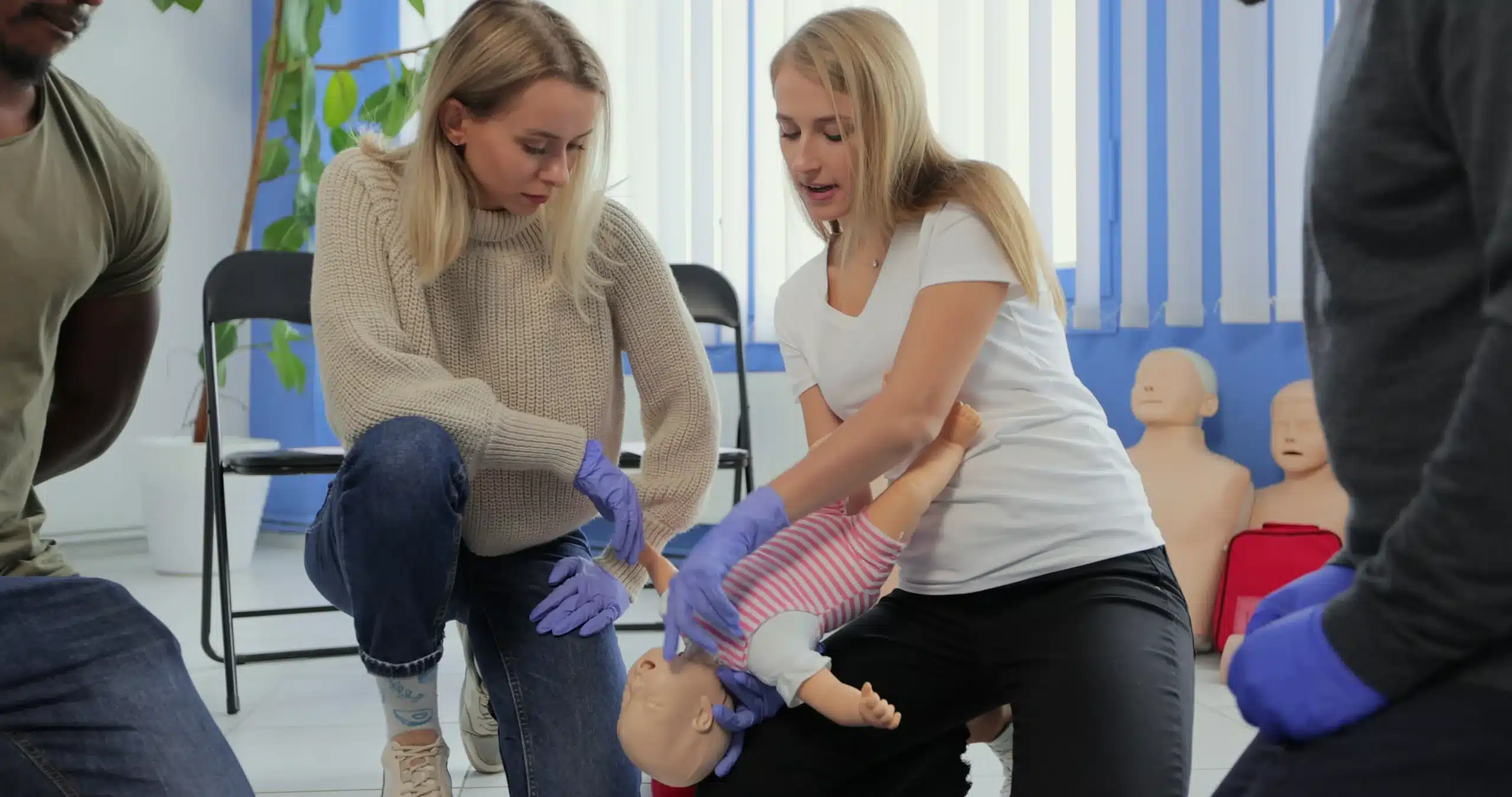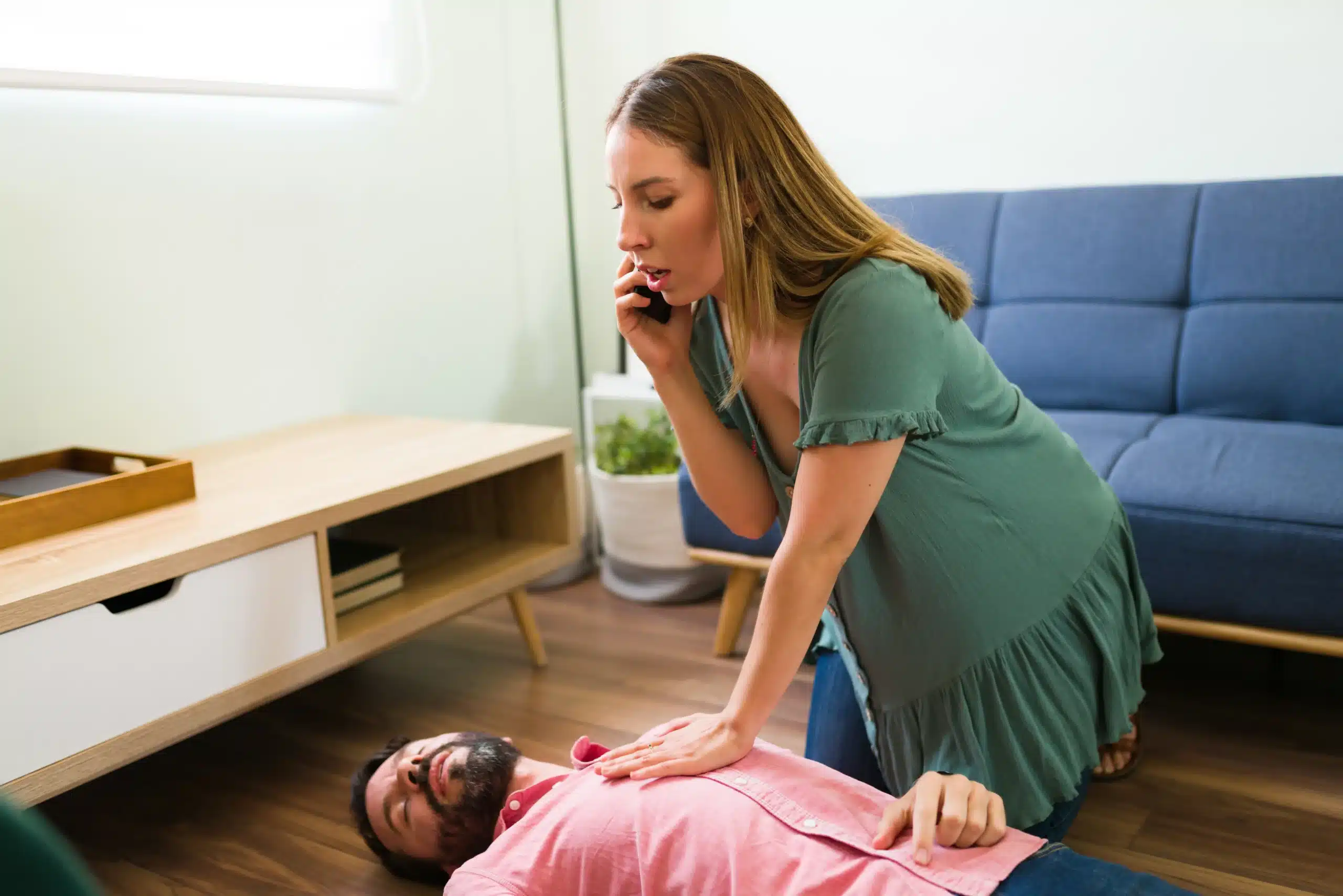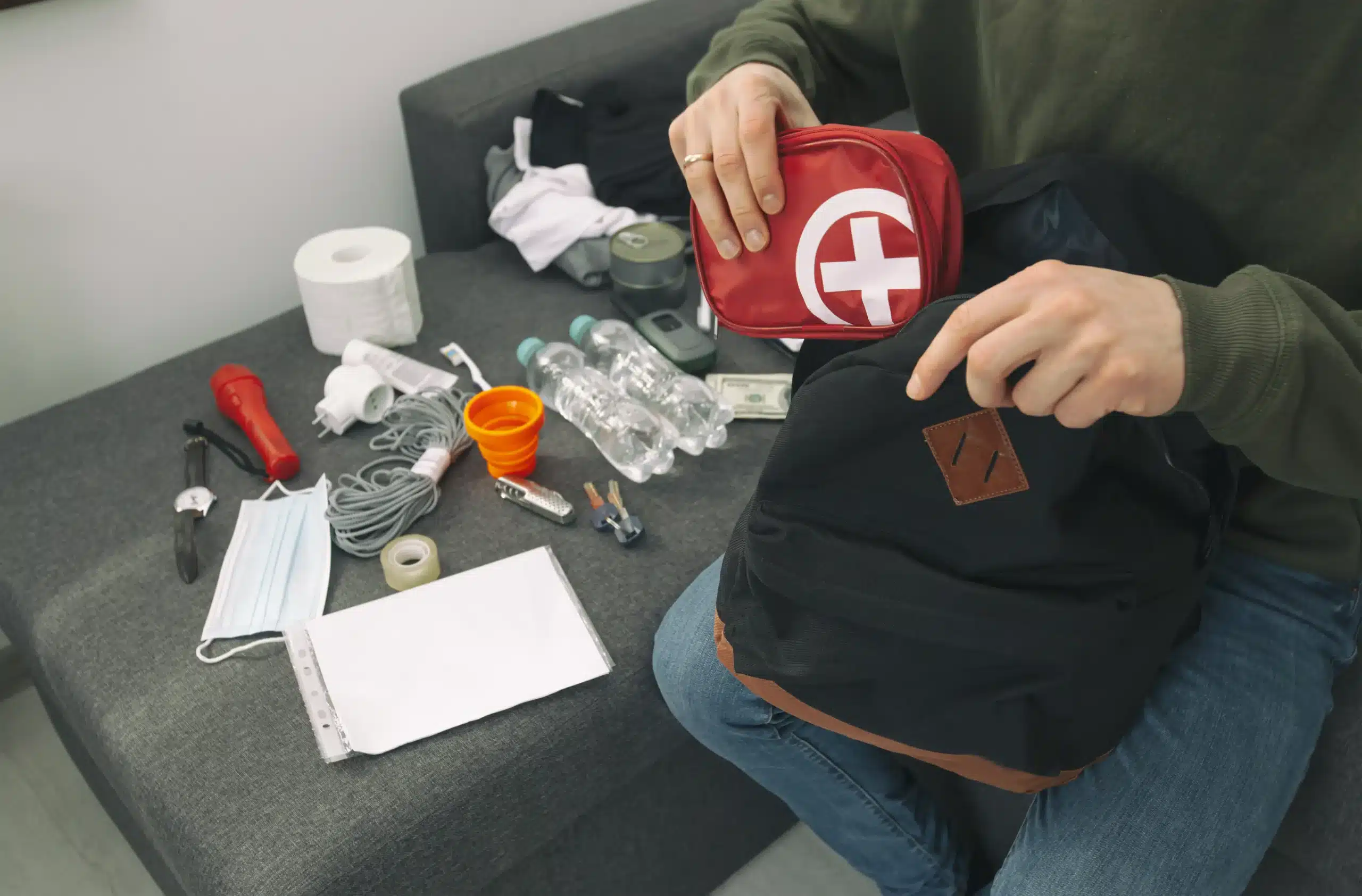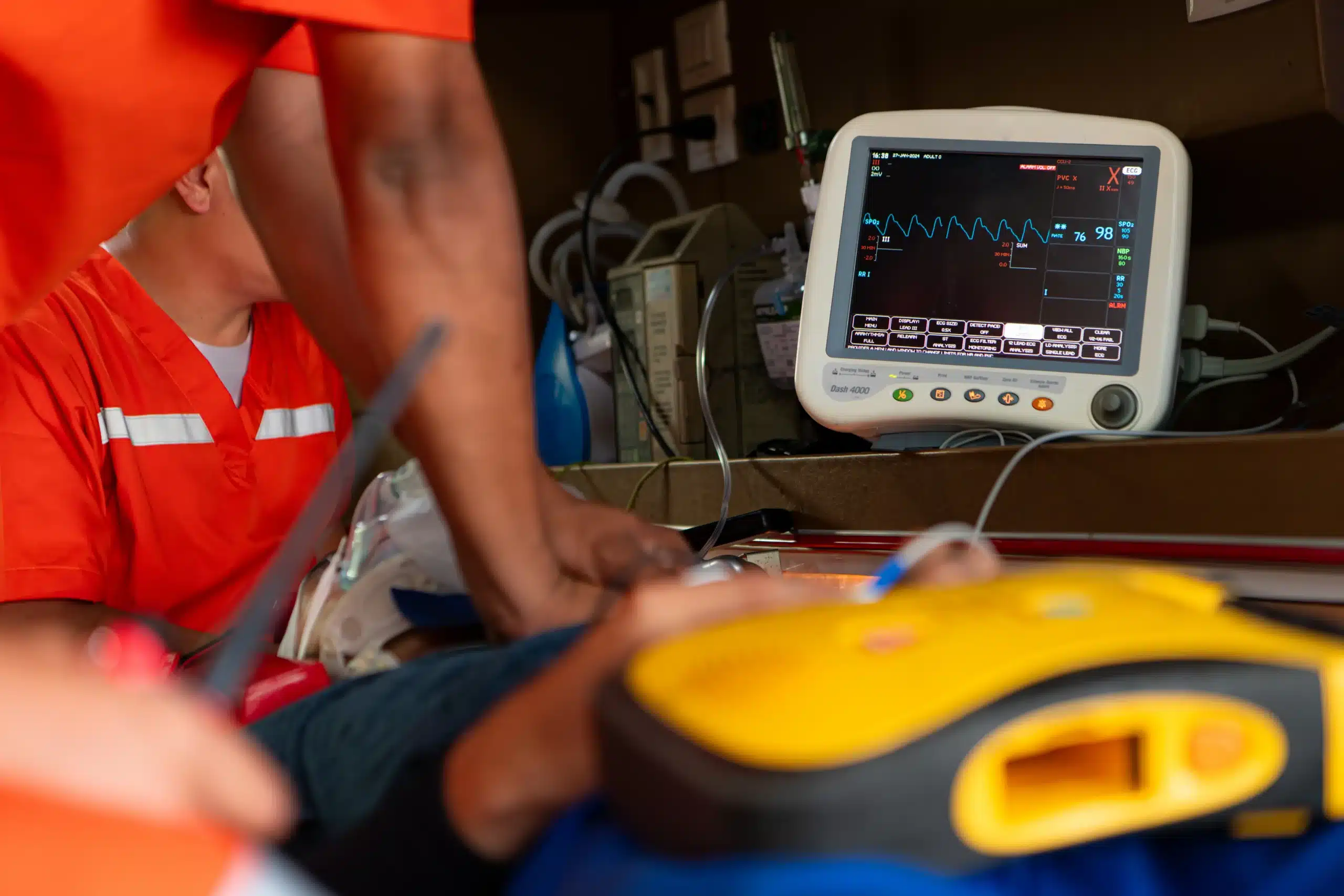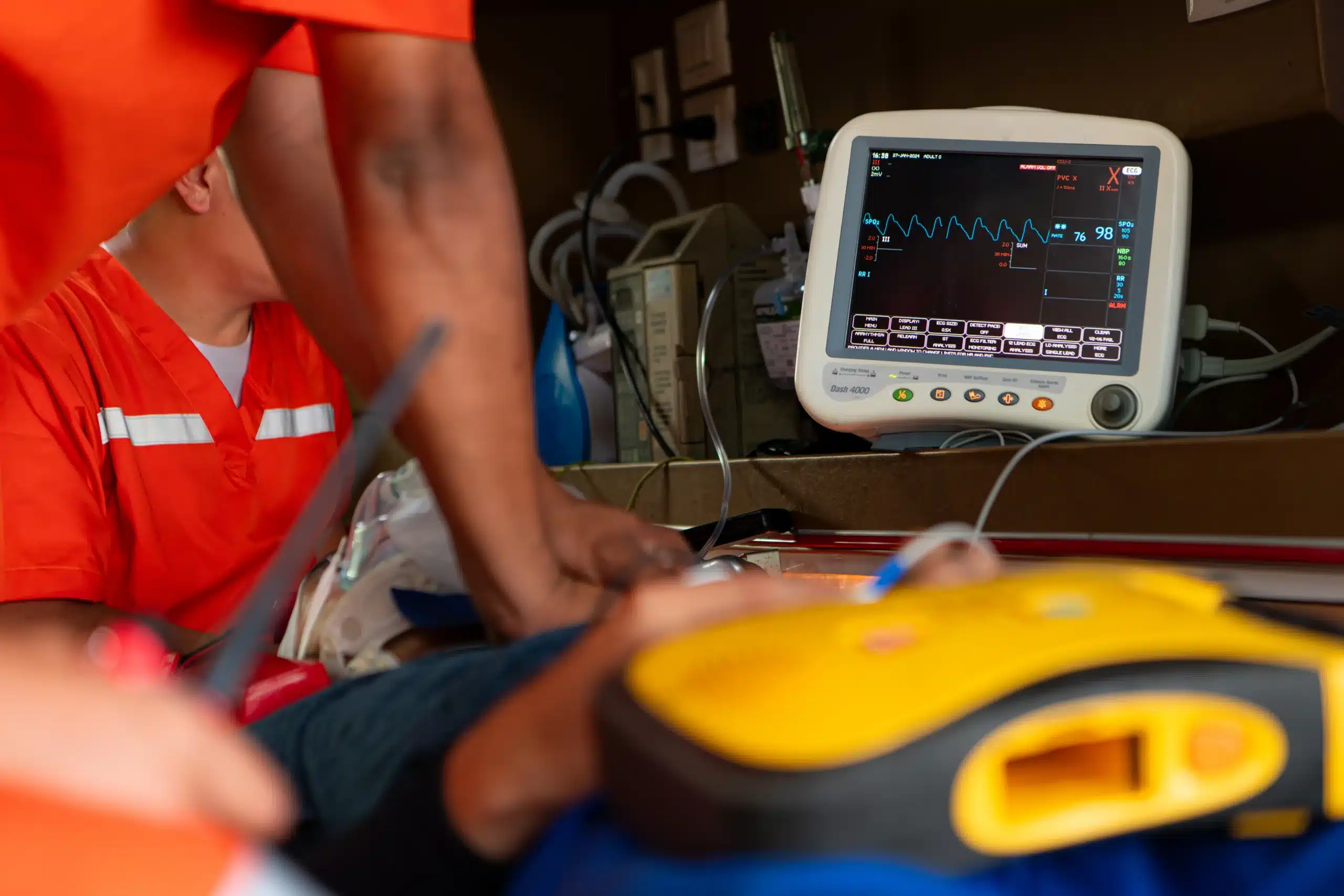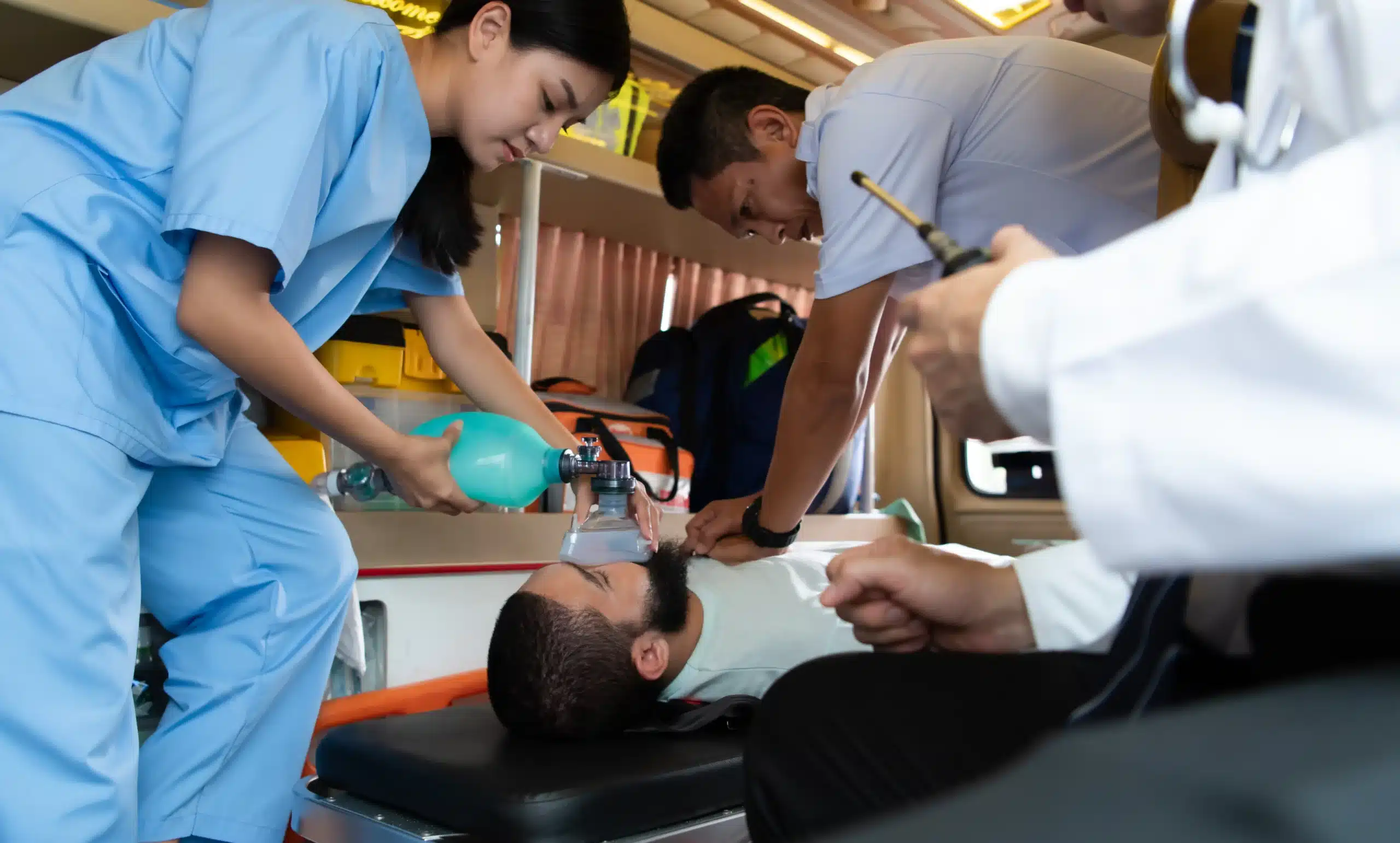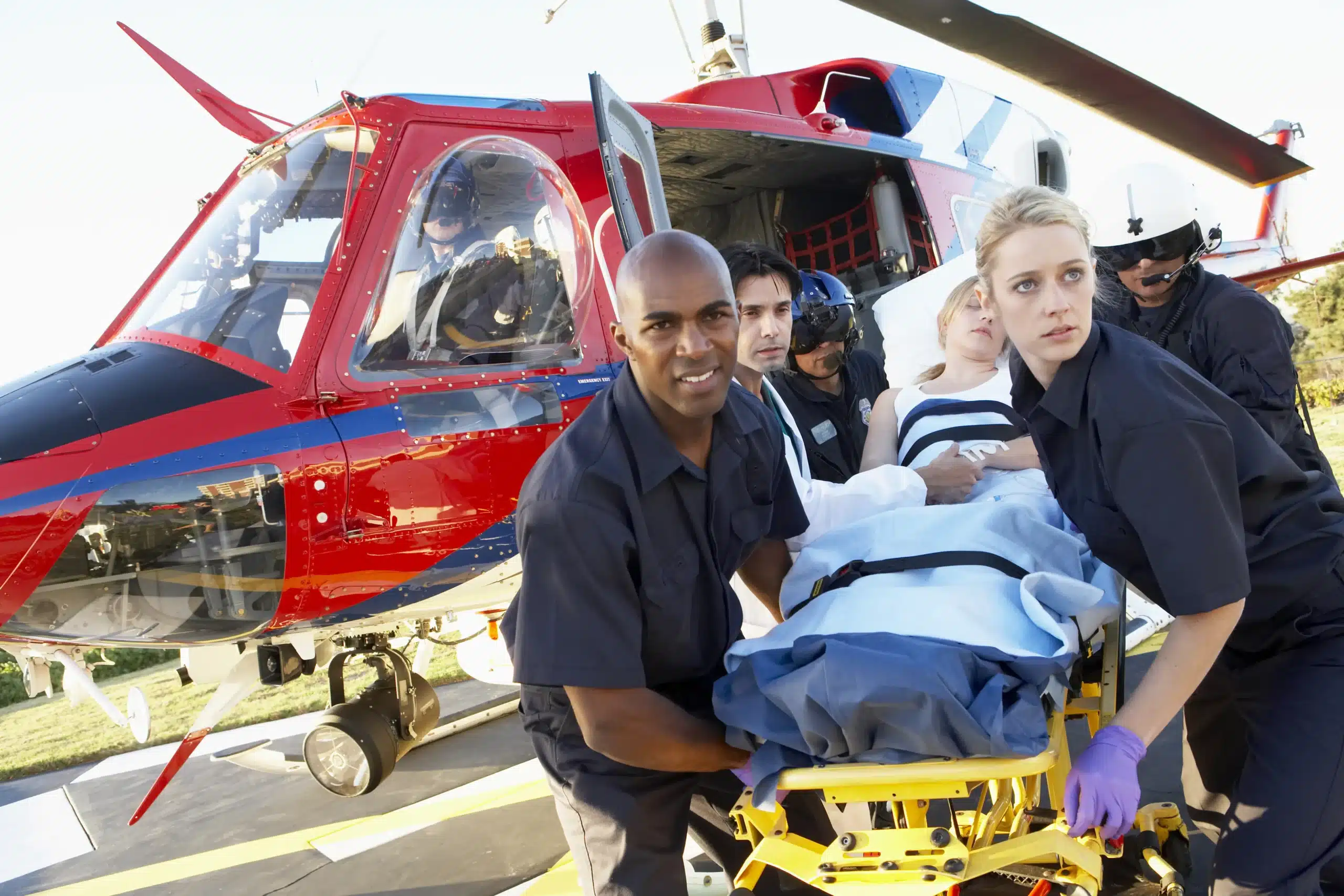Knowing CPR can transform you from a bystander into a potential lifesaver. This guide is designed to empower Alameda residents with the knowledge and resources to confidently respond to medical emergencies. We’ll break down the steps of CPR for Alameda residents, explore various training options, and discuss the importance of maintaining your skills. We’ll also address common misconceptions about CPR and highlight its significant impact on our community. Whether you’re a parent, a teacher, a healthcare worker, or simply someone who wants to be prepared, this guide will equip you with the skills to make a difference. Let’s explore how learning CPR can empower you to save lives.
Key Takeaways
- CPR is essential and easy to learn: Knowing the steps, from checking the scene to performing compressions, empowers you to act quickly and confidently during emergencies. Find local training or community workshops to gain this vital skill.
- The right training matters: Consider accreditation, course flexibility, and instructor experience when choosing a CPR program. Whether you need basic CPR or advanced certifications like BLS, ACLS, or PALS, select a program that fits your needs.
- Stay current with your CPR skills: Regular practice and keeping up with the latest guidelines are crucial for effective CPR. Utilize recertification courses, refresher workshops, and online resources to maintain your skills and confidence.
What is CPR?
Cardiopulmonary resuscitation (CPR) is a lifesaving technique used when someone’s heart stops beating effectively. It involves chest compressions and rescue breaths, which circulate oxygenated blood to the brain and other vital organs. Learning CPR empowers you to respond effectively during medical emergencies and can dramatically increase the chance of survival. The American Red Cross offers detailed information on CPR steps and the importance of immediate action. CPR can significantly improve a victim’s chance of survival, especially when administered quickly. Even if you’re unsure about the full CPR protocol, chest compressions alone can still be beneficial. Knowing CPR is a valuable skill that can make a real difference.
Learn the Essential CPR Steps
Knowing the steps to perform CPR can give you the confidence to act quickly in an emergency. These steps are easy to learn and remember.
Check the Scene and the Person
Before rushing in, quickly assess the scene for any potential dangers to yourself or others. Once you’ve determined it’s safe, check if the person is responsive. Gently tap their shoulder and ask loudly, “Are you okay?”
Call 911
If the person isn’t responsive or only gasps for air, immediately call 911. If someone else is nearby, ask them to call while you begin CPR. If an AED is available, send someone to retrieve it.
Open the Airway
To ensure the person can receive oxygen, carefully tilt their head back slightly and lift their chin. This simple action opens the airway and allows air to flow.
Check for Breathing
Listen closely for breathing for no more than 10 seconds. Remember, occasional gasping isn’t normal breathing. If the person isn’t breathing or only gasping, start CPR compressions.
Give Chest Compressions
Place one hand on top of the other in the center of the person’s chest. Push hard and fast, compressing the chest at least two inches deep. Aim for a rate of 100-120 compressions per minute. A familiar song like “Stayin’ Alive” can help you maintain the correct rhythm.
Give Rescue Breaths (Optional for Lay Rescuers)
While rescue breaths are part of traditional CPR, current guidelines from the American Heart Association prioritize chest compressions for lay rescuers. If you are trained and comfortable giving rescue breaths, pinch the nose shut, cover the person’s mouth with yours, and give two breaths. Watch for the chest to rise with each breath.
Continue CPR
Continue giving chest compressions, and rescue breaths if you’re trained, until one of the following occurs: the person starts breathing or showing signs of life, an AED arrives and is ready to use, emergency medical services arrive and take over, or the scene becomes unsafe.
Find CPR Training in Alameda
Finding the right CPR training in Alameda is easy thanks to a variety of options, from in-person classes to online courses and free community workshops. Whether you’re a healthcare professional, a concerned parent, or simply want to be prepared for emergencies, there’s a CPR course that fits your needs and schedule.
Local Training Centers
Alameda CPR Classes offers a combined CPR and First Aid certification course, which includes an online component, skills testing, and American Heart Association (AHA) certification. Their commitment to low prices and same-day certification makes them a convenient and affordable option. For those seeking a more traditional learning experience, several organizations in Alameda offer in-person CPR training. These courses provide hands-on training with certified instructors, allowing you to practice your skills and ask questions in a supportive setting.
Online CPR Courses
If you prefer a flexible learning experience, online CPR courses are a great choice. Several organizations in Alameda offer combined First Aid and CPR courses, including Safety Training Seminars. The course format can include in-person or blended learning, making it flexible for participants. Online courses allow you to learn at your own pace and complete the coursework from anywhere with an internet connection. Many online courses also include a hands-on skills session to ensure you’re fully prepared to perform CPR in a real-life situation.
Community-Based Programs
Community-based programs offer another avenue for CPR training in Alameda. Safety Training Seminars offers a variety of CPR and first aid courses in Alameda, designed to meet the needs of healthcare providers, community members, and workplace requirements. These programs often focus on providing affordable and accessible training to residents, making it easier for everyone to learn these lifesaving skills. Check with your local community centers, hospitals, or non-profit organizations to find CPR training opportunities near you.
Alameda County Fire Department Free Workshops
For those seeking free CPR training, the Alameda County Fire Department (ACFD) offers free, non-certification, informal Hands-Only Community CPR trainings throughout the year within the communities they serve. These workshops teach the basics of Hands-Only CPR, empowering you to provide immediate assistance in an emergency. While these workshops don’t provide formal certification, they’re a valuable resource for learning essential lifesaving techniques.
CPR Certification: Cost and Value
Getting CPR certified is an investment in yourself and your community. But how much does it cost, and what value does it bring? Let’s break it down.
Average Price Range
CPR certification costs vary depending on the provider and the type of course. Combined CPR and First Aid certification courses in Alameda often fall around $140, covering online instruction, in-person skills testing, and your certification card. Remember that prices can differ, so check with a few different providers in your area, such as Rocklin CPR Classes, to compare.
Group Discounts and Special Offers
If you’re certifying a group, explore group discounts. Many training centers offer on-site group training for CPR, First Aid, and other certifications like BLS, ACLS, and PALS. This can be a cost-effective way to train everyone together. For discounts on group CPR classes, reach out to learn more.
Financial Assistance Options
Don’t let finances be a barrier to learning this essential skill. Some providers offer financial assistance or payment plans to make CPR training more accessible. Check with your local training centers or community organizations to see what’s available.
Benefits of CPR Certification
The value of CPR certification goes beyond the certificate itself. Learning CPR equips you with the skills to respond confidently in medical emergencies, from choking incidents to cardiac arrest. You’ll be prepared to provide immediate assistance that can significantly impact someone’s chances of survival. It’s an invaluable skill that can make a real difference.
Choose the Right CPR Training
Finding the right CPR training involves considering several factors to ensure you receive high-quality instruction and a recognized certification. Here’s a breakdown of what to look for:
Accreditation and Certification Standards
Opt for a training program that adheres to nationally recognized standards. The American Heart Association (AHA) and the American Red Cross are two leading organizations that set these standards. Make sure the program you choose provides certification that’s accepted by your employer or licensing board, if applicable. AHA-authorized training centers, like Rocklin CPR Classes, often offer the most comprehensive and up-to-date instruction. We follow AHA guidelines meticulously, ensuring our students receive the best possible training. You can explore our AHA BLS course for healthcare providers and other certifications on our website.
Course Offerings and Flexibility
Different learning needs and schedules require different course formats. Look for a provider that offers a variety of courses, including basic CPR, ACLS, PALS, and first aid. Flexibility in scheduling is also key. Consider whether you prefer weekday or weekend classes, online or in-person options, or even blended learning formats. We understand busy schedules, which is why we offer a range of class times and formats to fit your needs. Check out our contact page to discuss scheduling.
Instructor Qualifications
Experienced, certified instructors make all the difference. Inquire about the instructors’ credentials and experience. Ideally, they should be certified by a recognized organization like the AHA and have a strong background in healthcare or emergency response. Our instructors at Rocklin CPR Classes are highly qualified and bring real-world experience to the classroom, creating an engaging and informative learning environment. We equip our students with the knowledge and confidence to respond effectively in emergencies. Consider our discount group classes for a more affordable way to gain these essential skills.
Local CPR Training Providers
Finding a local provider can simplify logistics and offer a more personalized experience. Here are a few options in Alameda and beyond:
CPR Education
CPR Education offers a range of courses, from basic to advanced levels.
American Red Cross
The American Red Cross is a well-known provider of CPR and first aid training. Their website offers resources on CPR steps.
Alameda County EMS Agency
Check the Alameda County EMS Agency website for information on local resources and initiatives related to cardiac arrest response. They offer valuable insights into their system-wide approach to improving outcomes for sudden cardiac arrest patients.
Safety Training Seminars
Safety Training Seminars provides comprehensive CPR and first aid training in Alameda.
Always CPR Training
Always CPR Training is a National Training Center offering AHA courses.
LifeSavers CPR
LifeSavers CPR offers various CPR and first aid courses tailored to individual and organizational needs.
Rocklin CPR Classes
We offer a comprehensive range of AHA-certified courses, including BLS, ACLS, and PALS, serving Rocklin, Roseville, and Sacramento. Our focus is on providing high-quality, affordable training that empowers individuals to save lives.
CPR Training for Specific Needs
CPR training isn’t one-size-fits-all. Different age groups and professions require specialized knowledge and techniques. Let’s explore a few key areas:
Pediatric CPR
CPR for infants and children differs significantly from adult CPR. It’s essential to know how to assess a child’s condition, deliver appropriate chest compressions and rescue breaths, and handle potential complications like choking. Pediatric CPR training equips parents, caregivers, and anyone working with children with the confidence to respond effectively in emergencies. Remember, about 70% of heart attacks happen outside hospitals, so being prepared is crucial. For more comprehensive information on pediatric first aid and CPR, check out our detailed guide.
CPR for Healthcare Providers
Healthcare providers, including doctors, nurses, and EMTs, need advanced life support skills beyond basic CPR. BLS (Basic Life Support) certification focuses on team-based resuscitation, airway management, and the use of automated external defibrillators (AEDs). ACLS (Advanced Cardiovascular Life Support) training builds upon BLS, covering complex cardiac emergencies and pharmacology. PALS (Pediatric Advanced Life Support) addresses the specific needs of infants and children in critical situations. These certifications are often required for healthcare professionals and demonstrate a commitment to providing high-quality patient care. For more information on BLS, ACLS, and PALS courses, visit Safety Training Seminars.
CPR for Seniors
While the core principles of CPR remain consistent, certain considerations apply when assisting seniors. Age-related physical changes may require modified techniques for chest compressions and airway management. Additionally, seniors are more likely to have underlying health conditions that could complicate CPR. Specialized training can help caregivers and family members understand these nuances and provide appropriate care during emergencies. For more information, explore this comprehensive guide on CPR and First Aid certification, covering fundamental skills to respond to various medical situations.
Maintain Your CPR Skills
CPR isn’t a learn-it-and-forget-it skill. Regular practice and staying up-to-date on the latest guidelines are crucial for providing effective CPR in a real emergency. This section covers how you can maintain your skills and be ready to respond when needed.
Recertification Requirements
CPR certifications, like those offered by the American Heart Association, typically expire after two years. This isn’t arbitrary—guidelines and best practices can change, and regular recertification ensures you’re using the most effective techniques. Check with your certifying organization for specific recertification requirements and timelines. Staying current with your certification demonstrates your commitment to providing high-quality CPR.
Practice and Refresher Courses
Even if your certification is still valid, regular practice is key to maintaining muscle memory and confidence. Consider attending refresher courses or practicing with friends or family members. Many training centers, like Rocklin CPR Classes, offer recertification courses to help you stay sharp. These courses often cover updates to CPR techniques and provide opportunities for hands-on practice.
CPR Apps and Online Resources
Several apps and online resources can supplement your in-person training. These tools offer convenient ways to review CPR steps, watch videos demonstrating proper techniques, and even test your knowledge. While these resources are valuable for refreshing your memory, they shouldn’t replace hands-on practice with a certified instructor. Some CPR and First Aid certification courses include online components, making it easier to stay current with your training. Remember, consistent practice is the best way to ensure you’re prepared to act quickly and confidently in an emergency.
CPR Misconceptions
It’s easy to misunderstand CPR if you haven’t learned the facts from qualified CPR instructors. Let’s clear up some common misconceptions about this life-saving technique.
“CPR is Only for Professionals”
Many people hesitate to perform CPR because they think it should only be done by doctors or paramedics. This isn’t true. When someone’s heart stops, immediate action is crucial. Bystanders trained in CPR can make a real difference while waiting for first responders to arrive. Learning CPR empowers you to provide immediate support and potentially save a life.
“You Can Hurt Someone by Performing CPR”
Some worry about causing injury, like broken ribs, during CPR. While there’s a small risk, doing nothing is far more dangerous. Proper CPR training teaches you the correct techniques to minimize risk. Remember, the goal is to circulate oxygenated blood to the brain and vital organs. Any potential for minor injury is outweighed by the potential to save a life. If you’re concerned about technique, find a local class and get certified.
“CPR is Only for Cardiac Arrest”
CPR is a vital response to cardiac arrest, but it’s also helpful in other situations where breathing and circulation have stopped, such as near-drowning or other respiratory emergencies. Recognizing the signs of cardiac arrest and starting CPR immediately can dramatically improve outcomes. Consider taking a first-aid course in addition to CPR training to be prepared for various emergencies.
CPR’s Impact on Alameda
CPR training and awareness have a profound impact on communities, and Alameda is no exception. By understanding the importance of CPR and taking action, residents can contribute to a safer and more prepared city.
Improve Survival Rates
Effective bystander CPR dramatically increases survival rates after sudden cardiac arrest (SCA). Studies show that immediate CPR can double or even triple a person’s chances of survival. In Alameda, quick access to medical care is crucial, and knowing CPR can be the difference between life and death. Every second counts during a cardiac emergency, and bystander CPR bridges the gap until paramedics arrive. Learning CPR empowers you to take action and potentially save a life.
Build a Culture of Preparedness
Alameda benefits from a community-wide focus on emergency preparedness, including CPR training. The Alameda County EMS Agency uses a comprehensive approach to improve SCA outcomes, coordinating various elements to ensure a quick response. This commitment to preparedness creates a ripple effect, encouraging residents to get CPR and first aid certified and become active participants in the city’s safety net. When many people are trained in CPR, it creates a culture of preparedness and strengthens the community’s ability to handle emergencies.
Empower Bystanders
Equipping bystanders with the skills to perform CPR is essential for improving survival rates in Alameda. The Medical Priority Dispatch System (MPDS) used by 911 dispatchers helps quickly identify SCA and guide callers on how to perform CPR while waiting for paramedics. This immediate guidance can be life-saving. CPR classes in Alameda empower residents to confidently respond to emergencies. Knowing CPR transforms bystanders into potential lifesavers, giving them the tools to make a real difference.
Promote CPR Awareness in Alameda
CPR can dramatically improve survival rates during medical emergencies, but its effectiveness relies on widespread knowledge and training. Let’s explore ways to boost CPR awareness in Alameda.
Community Workshops and Events
Organizing community workshops and events is a fantastic way to spread CPR awareness and provide hands-on training. The Alameda County Fire Department (ACFD) already offers free Hands-Only CPR training throughout the year. Take advantage of these valuable resources and encourage your friends and family to participate. Partnering with local businesses, community centers, or schools to host CPR training events makes them accessible and engaging for a wider audience. Even a simple demonstration at a local fair or festival can make a difference.
Social Media Campaigns
Social media is a powerful tool for sharing vital information and raising awareness about important causes like CPR. Effective bystander CPR can double or triple a person’s survival rate during cardiac arrest. Share this statistic and other compelling facts on your social media channels. Post videos demonstrating proper CPR techniques, share inspiring stories of lives saved by CPR, and use relevant hashtags to reach a broader audience. A social media challenge could encourage people to learn CPR and share their experiences.
Partner with Local Organizations
Collaborating with local organizations is key to expanding the reach of CPR training in Alameda. Safety Training Seminars offers a range of AHA-certified courses in the area. Partnering with established CPR providers, like Alameda CPR Classes, can help connect residents with high-quality training. Working with local businesses to offer CPR training to their employees is another effective strategy. By working together, we can create a network of support and resources that empowers more people to learn CPR and be prepared to act in emergencies.
Related Articles
- CPR Certification Near Me: Your Complete Guide – Rocklin CPR Classes
- CPR Training in Roseville: Your Complete Guide – Rocklin CPR Classes
- CPR Classes in Roseville: Find the Right Course for You – Rocklin CPR Classes
- Why CPR is Critical in Healthcare – CPR and First-Aid Training
- CPR Training in Sacramento: Your Guide – Rocklin CPR Classes
Frequently Asked Questions
What if I’m afraid of doing something wrong during CPR? It’s completely normal to feel hesitant. Remember, any attempt at CPR is better than none. Focus on chest compressions – even without rescue breaths, you can significantly improve someone’s chances. Taking a CPR class will build your confidence and teach you the proper techniques.
How often do I need to renew my CPR certification? CPR certifications are typically valid for two years. It’s important to recertify to stay up-to-date on the latest guidelines and best practices, which can change.
Is online CPR training as effective as in-person training? Online CPR courses offer flexibility and convenience, but they often lack the hands-on practice crucial for mastering CPR skills. Look for blended learning options that combine online coursework with in-person skills sessions for the most comprehensive training.
Where can I find CPR training near me? Several organizations offer CPR training, including the American Red Cross, local hospitals, community centers, and specialized training providers like Rocklin CPR Classes. Searching online for “CPR training near me” is a great starting point.
What’s the difference between CPR and First Aid? CPR focuses on restoring breathing and circulation when someone’s heart has stopped. First Aid covers a broader range of medical emergencies, from minor cuts and burns to more serious injuries like fractures and allergic reactions. Both are valuable skills to have.
